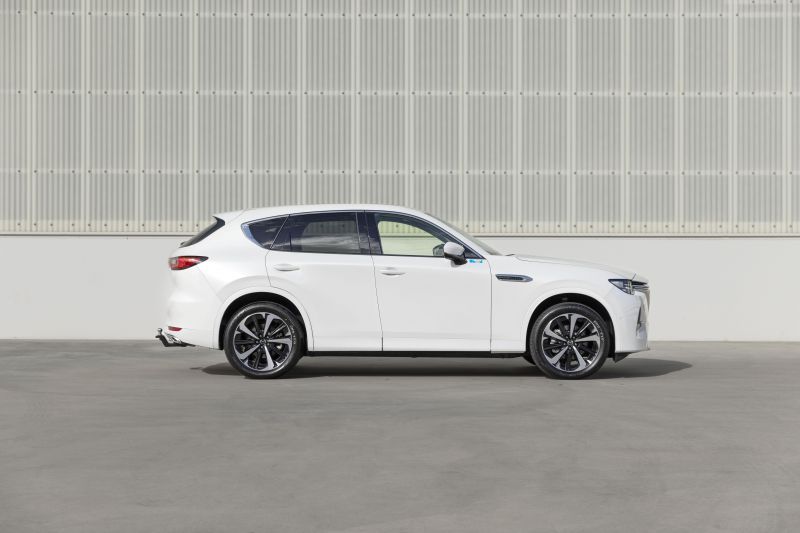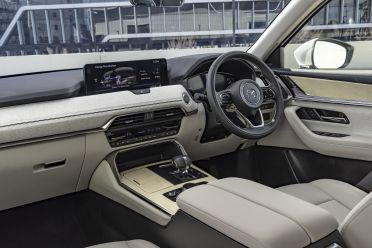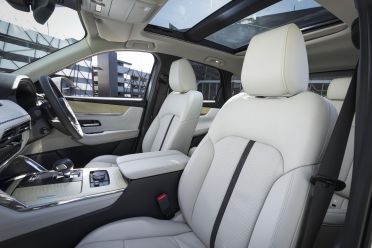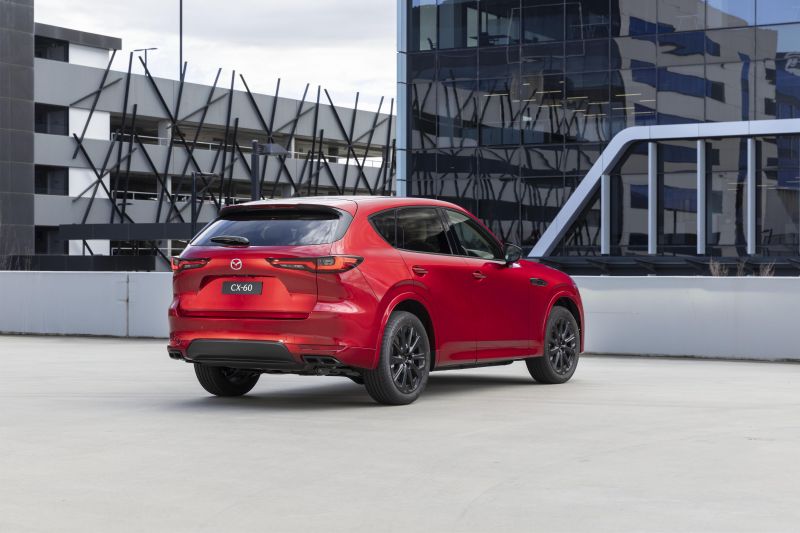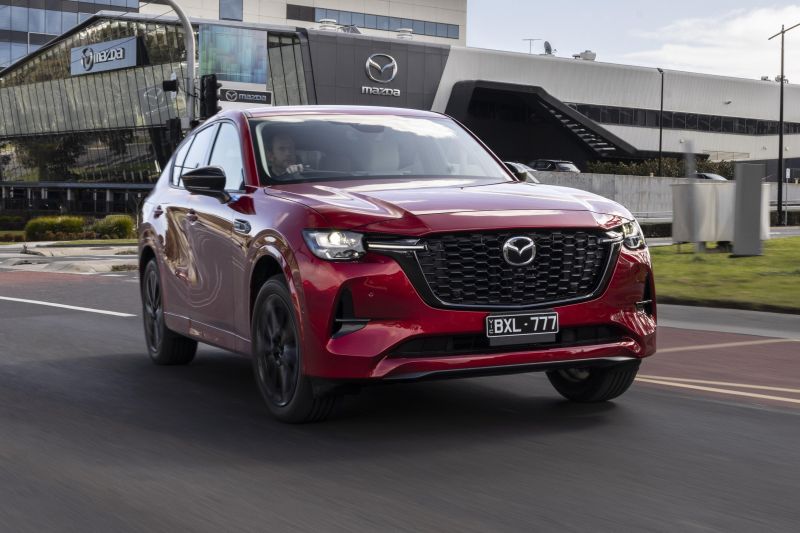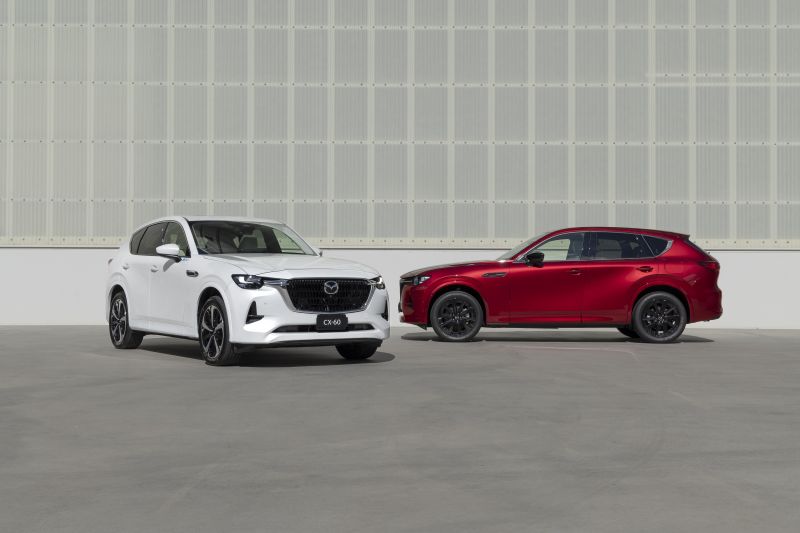Mazda won’t launch its new CX-60 with a naturally-aspirated base four-cylinder engine after all, while the previously confirmed plug-in hybrid will be joined by new inline sixes.
The CX-60 range is now due in the first half of 2023, not late in 2022 as had previously been understood, and full pricing and specifications will be announced in the fourth quarter of this year.
Mazda has also detailed its new turbocharged 3.3-litre inline six-cylinder petrol engine, debuting in the CX-60, which produces 209kW of power at 5000rpm and 450Nm of torque from 2000 to 3500rpm. Interestingly, this is a different engine to the motor bound for Europe and Japan, which is a 3.0-litre e-Skyactiv X unit incorporating Mazda’s lean-burning compression-ignition petrol technology and supercharging.
It’ll be joined by a 3.3-litre e-Skyactiv D turbo-diesel inline-six with 187kW of power at 3750rpm and 550Nm of torque between 1500 and 2400rpm.
Both engines feature M Hybrid Boost 48V mild-hybrid systems, Mazda’s rear-biased i-Activ all-wheel drive system, and an eight-speed automatic transmission. It appears Mazda won’t bring any rear-wheel drive CX-60s here.
The new transmission, branded as Skyactiv-Drive, utilises a multi-plate clutch with an integrated electric motor/generator, promising high efficiency and quick shifts.
The new six-cylinder engines will join the previously confirmed plug-in hybrid, Mazda’s first such powertrain. It mates a 2.5-litre inline-four Skyactiv-G engine with an 100kW electric motor and a 17.8kWh lithium-ion battery.
Total system outputs are 241kW of power and 500Nm of torque, making it Mazda’s most powerful road car ever.
The CX-60 will be offered in Evolve, GT and Azami trim levels, with standard equipment across the range including wireless Apple CarPlay and Android Auto, wireless phone charging, a power tailgate, advanced keyless entry, and power-folding, heated exterior mirrors with auto-dimming.
Alloy wheel sizes will range from 18- to 20-inches, and the new Rhodium white metallic will be available across the range.
Measuring 4740mm long, 1890mm wide and 1685mm tall with a 2870mm wheelbase, the CX-60 is 190mm longer, 50mm wider and 10mm taller than the CX-5, with a 170mm longer wheelbase.
It’s also 32mm longer, 1mm narrower and 9mm taller than a BMW X3, and features a 6mm longer wheelbase.
While the CX-5 dukes it out with the likes of the Toyota RAV4, the CX-60 is more of a rival to the Lexus NX and Audi Q5, among other premium-branded models.
“The CX-60 represents a whole new chapter for Mazda and introduces a series of firsts for the brand: an all-new platform; full plug-in hybrid technology; rear-biased all-wheel drive and state-of-the-art longitudinal powerplants,” said Mazda Australia managing director Vinesh Bhindi.
“All of this is wrapped in our beautifully restrained Kodo Design evolution, and as we draw closer to the local introduction of this authentically premium vehicle, the 14,500+ expressions of interest we have already received are a clear indication of the level of anticipation that already surrounds Mazda CX-60.”
Mazda had previously indicated the CX-60 would launch with a naturally aspirated 2.5-litre four-cylinder petrol engine with 138kW and 250Nm, which would precede the plug-in hybrid.
That would have been an unusual engine choice for the part of the market the CX-60 will compete in, as among premium mid-sized SUVs only the Lexus NX250 offers an atmo four.
Last month, Mazda brought a pair of pre-production CX-60s to Australia to kick off “an intensive local testing program”.
Mazda Australia has detailed its pre-launch process for the new model, which will “measure key data in a series of high- and low-load scenarios that include powertrain stress-testing, towing capability, quality assurance”. It’ll also be testing real-world electric driving range for the flagship plug-in hybrid variant.
The company says the development vehicles will cover more than 30,000km during up to six months of testing, with data to be collated and then shared with Mazda’s global R&D centre in Hiroshima for analysis.
Why Australia? Mazda says our market is a key test bed thanks to its “unique road composition and climatic conditions”.
Additionally, the two CX-60 prototypes will serve as training subjects for the 140-strong national dealer network in the lead-up to the model’s sales launch in the coming months.
The CX-60 is the first of several cars to be built on Mazda’s new Large Architecture, which offers rear/all-wheel drive and six-cylinder engines.
Mazda has confirmed four new SUV nameplates already – the CX-60, CX-70, CX-80 and CX-90. The CX-60 and CX-80 will be two- and three-row models respectively, targeted primarily at the European market, while the CX-70 and CX-90 are wider, and aimed at North America.
It’s unclear whether the CX-80 and CX-90 will eventually replace the existing CX-8 and CX-9 globally given the similar nomenclature; Mazda has said previously these lines will be sold alongside each other for the foreseeable future.
As for which other cars will come to Australia? Mazda’s local arm has indicated it’s looking into all available options.
MORE: 2023 Mazda CX-60 review
MORE: Everything Mazda CX-60

